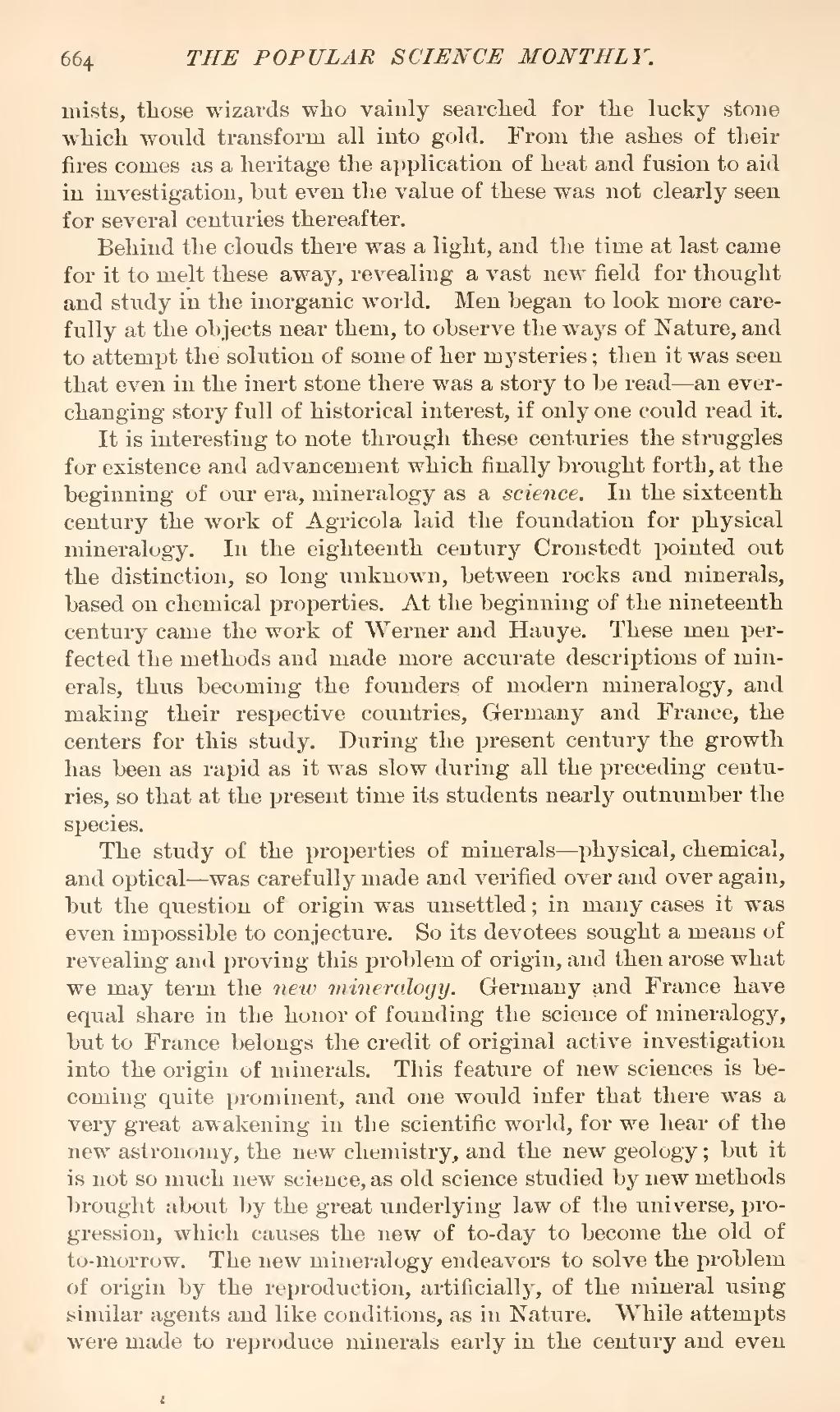mists, those wizards who vainly searched for the lucky stone which would transform all into gold. From the ashes of their fires comes as a heritage the application of heat and fusion to aid in investigation, but even the value of these was not clearly seen for several centuries thereafter.
Behind the clouds there was a light, and the time at last came for it to melt these away, revealing a vast new field for thought and study in the inorganic world. Men began to look more carefully at the objects near them, to observe the ways of Nature, and to attempt the solution of some of her mysteries; then it was seen that even in the inert stone there was a story to be read—an ever-changing story full of historical interest, if only one could read it.
It is interesting to note through these centuries the struggles for existence and advancement which finally brought forth, at the beginning of our era, mineralogy as a science. In the sixteenth century the work of Agricola laid the foundation for physical mineralogy. In the eighteenth century Cronstedt pointed out the distinction, so long unknown, between rocks and minerals, based on chemical properties. At the beginning of the nineteenth century came the work of Werner and Hauye. These men perfected the methods and made more accurate descriptions of minerals, thus becoming the founders of modern mineralogy, and making their respective countries, Germany and France, the centers for this study. During the present century the growth has been as rapid as it was slow during all the preceding centuries, so that at the present time its students nearly outnumber the species.
The study of the properties of minerals—physical, chemical, and optical was carefully made and verified over and over again, but the question of origin was unsettled; in many cases it was even impossible to conjecture. So its devotees sought a means of revealing and proving this problem of origin, and then arose what we may term the new mineralogy. Germany and France have equal share in the honor of founding the science of mineralogy, but to France belongs the credit of original active investigation into the origin of minerals. This feature of new sciences is becoming quite prominent, and one would infer that there was a very great awakening in the scientific world, for we hear of the new astronomy, the new chemistry, and the new geology; but it is not so much new science, as old science studied by new methods brought about by the great underlying law of the universe, progression, which causes the new of to-day to become the old of to-morrow. The new mineralogy endeavors to solve the problem of origin by the reproduction, artificially, of the mineral using similar agents and like conditions, as in Nature. While attempts were made to reproduce minerals early in the century and even

